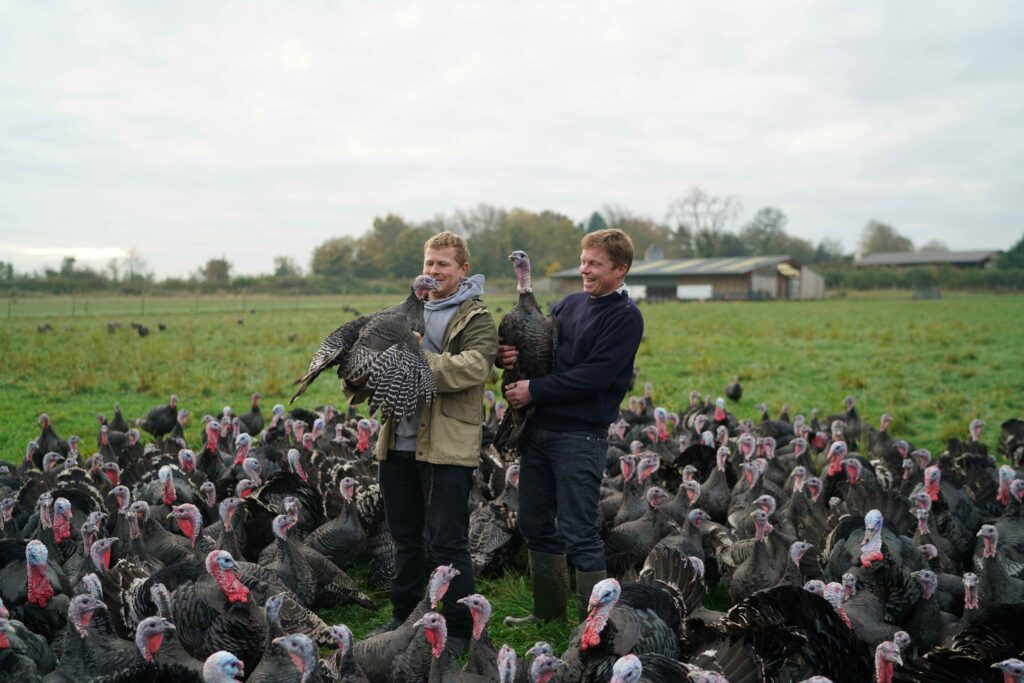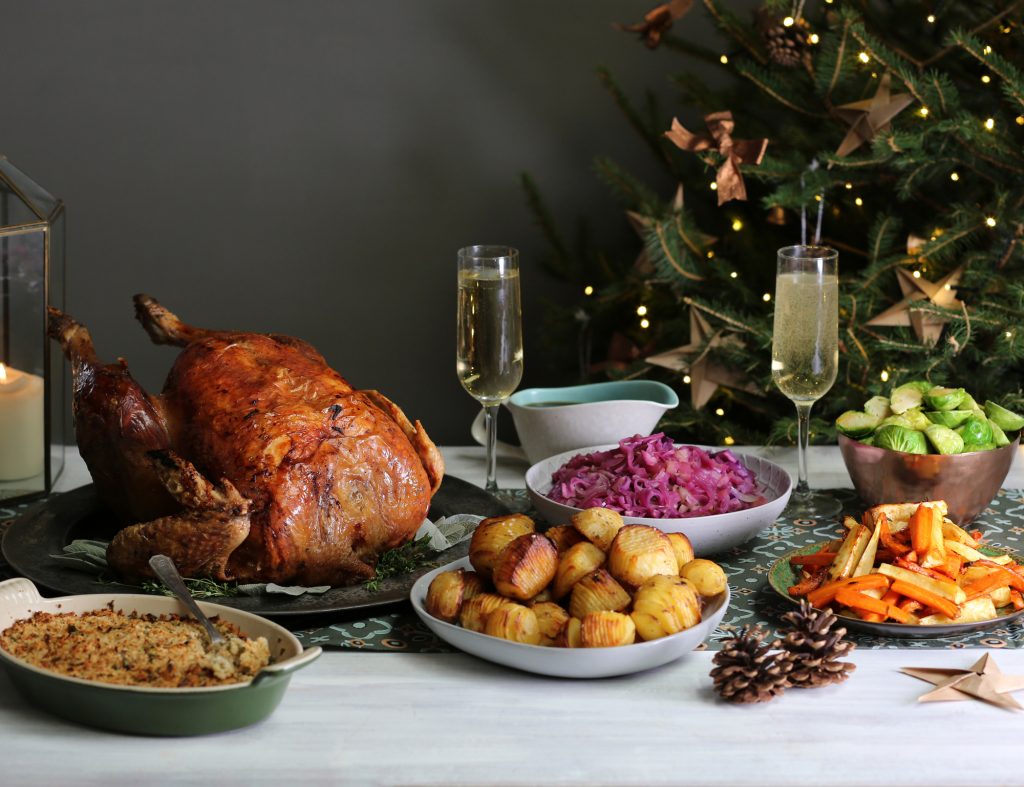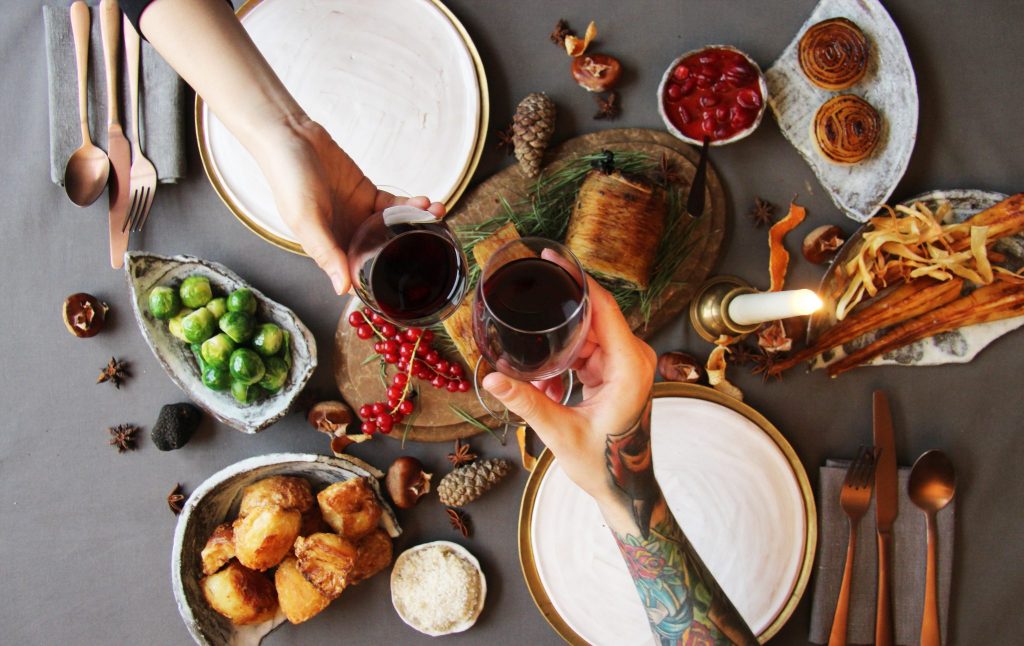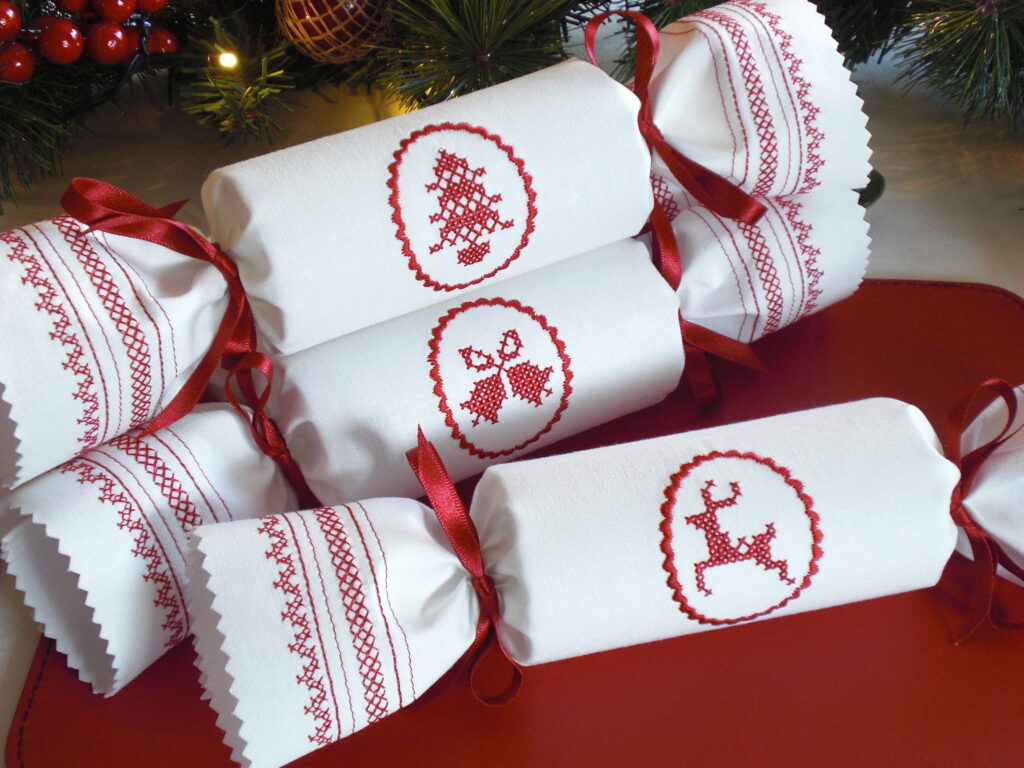Christmas turkey – every year we take weeks to plan a meal around it. But, one thing we do not spend enough time on is understanding how supermarket turkeys vs organic and free-range turkeys have been reared. And this is possibly the most fundamental requirement for a top tasting bird.
Of course, since you’re reading this on Live Frankly, you’ll know we’re big advocates for organic, truly free-range birds. You may have already seen we’ve made our case for free-range and organic chicken.
The secret to delicious turkey starts long before it reaches your oven
Whether or not a turkey turns out well is not only down to our cooking skills, it’s also because of the huge disparity in how they are farmed.
“Good meat, flavour and contentment at the dinner table comes from the age of the bird,” says Nick Ball from Fosse Meadows. “The meat from a bird grown like this is far more filling and will shrink far less through the cooking. The bones provide far more richness and collagen into stocks and broths.”
The best-tasting turkey – one that has a depth of flavour, is juicy and tender but also has structure – needs to be slow-grown for around six months.
This turkey can only be bought from certain farmers and butchers, who are committed to doing things the right way. The slow way.

What’s in an intensively farmed supermarket turkey?
Let’s not focus on the bad for too long, but it’s important to understand than an estimated 90% of UK turkeys are reared in intensive indoor systems, according to industry data and animal welfare charities. This means no matter how pretty the packaging, there’s a good chance you’re buying a turkey that’s been kept indoors, pumped with antibiotics, and fed a high-protein diet of genetically modified grains.
These birds have been bred to be so heavy they are no longer able to fly or mate naturally. Beak trimming is also commonplace to stop them from pecking at each other because they live in in such close confinement.
Delicious, huh?
In this system, birds that have the potential to grow to 15kg are only taken to 5kg, because this is a popular size for the Christmas table. The result is a bird that has an immature tenderness, which in theory sounds good – who doesn’t want tender meat? But, in practice it can be very challenging for a chef because the turkey is also full of water that evaporates when cooking. When this happens, the texture collapses creating that dry, tasteless sensation turkey has a reputation for.

How are genuinely free-range turkeys raised?
Turkey didn’t traditionally taste like this – and nor should it. Opting for an organic or genuinely free-range slower-growing breed, such as a Norfolk Black, Bronze or Bourbon Red, that has been grown to full maturity creates a completely different eating experience.
Abel and Cole sources all their turkeys, both organic and non-organic, from Paul Kelly. “Their good welfare starts with the genetics,” explains Abel & Cole‘s Ed Ayton. The Kelly Bronze was developed by Paul and his dad who, Ayton explains, took the last of the true Bronze genetics left in the UK and revived the traditional breed.
Paul operates a very low stocking density for all of his birds, around 500 birds per acre, and all are raised outdoors for most of their lives (after being hatched indoors) in a range of pasture and woodland, with opportunities to forage, dust bath and express natural behaviours. The tree cover of the woodland and open pasture provides the perfect ‘edge habitat’ turkeys originally evolved in, enabling them to fulfil their full range of natural behaviours. Living a relatively stress-free, outdoor life like this means the flock doesn’t need to be regularly medicated with antibiotics.
Supermarket turkey vs organic and free-range: are organic and free-range turkey really better?
Paddocks and pasture are also an essential part of producing a happy and tasty turkey at Fosse Meadows.
Fosse Meadows turkeys have airy straw-bedded barns, but also 24/7 access to grazing paddocks which offer twice the amount of space given to many other free-range birds.
“Turkeys are incredibly curious and range over large distances,” Ball explains.
“A biodiverse field is not only good for the environment attracting different invertebrates and building resilience into the soil but the birds love the herb rich salad bowl just as much, supplementing their feed with plenty of grains and the odd insect!”
The end result? “Healthy turkeys with a healthy layer of delicious fat, rich dark leg meat and breast meat with a marbling of fat that runs through the muscle adding succulence when cooked.”
Why are organic and free-range turkeys more expensive?
The cost of feeding a turkey is often the most important determining factor in its cost. Turkeys that live for twice as long eat more than twice as much because the bigger they get, the more they eat. Processing turkeys before they reach full maturity is one of the reasons you could buy a turkey for about £12 in supermarkets, last year. It’s an undeniably huge difference in price.
“Some of the ways turkeys are raised for maximum production can easily produce a sick, injured or stressed animal. Well-trained farm hands, a relatively stress-free and healthy life, an enjoyable environment, slow growth – these aren’t just nice-to-haves, they are the cornerstone of healthy, nutritious meat,” says Ayton.
“Farming this way takes a little bit longer, involves more people instead of machines, and that also increases the cost. I wish everyone could have the opportunity to enjoy this type of food.”
Four questions to ask to ensure you’re buying top-quality turkey:
What breed is it? Opt for a heritage and slower-growing breed – a Norfolk Black, Bronze or Bourbon Red are some of the most common
How old was it when it was killed? 24 weeks allows a turkey to reach full maturity
How was it plucked? Only dry-plucked birds can be hung, so this is another assurance of quality
For how long was it hung? Ideally, you’re looking for at least 10 days and up to three weeks
If you want to make sure you’re getting the best-tasting turkey possible, check out our article on where to buy the best ethical and sustainable turkey. All options deliver directly to your door.
Main image: Pipers Farm





